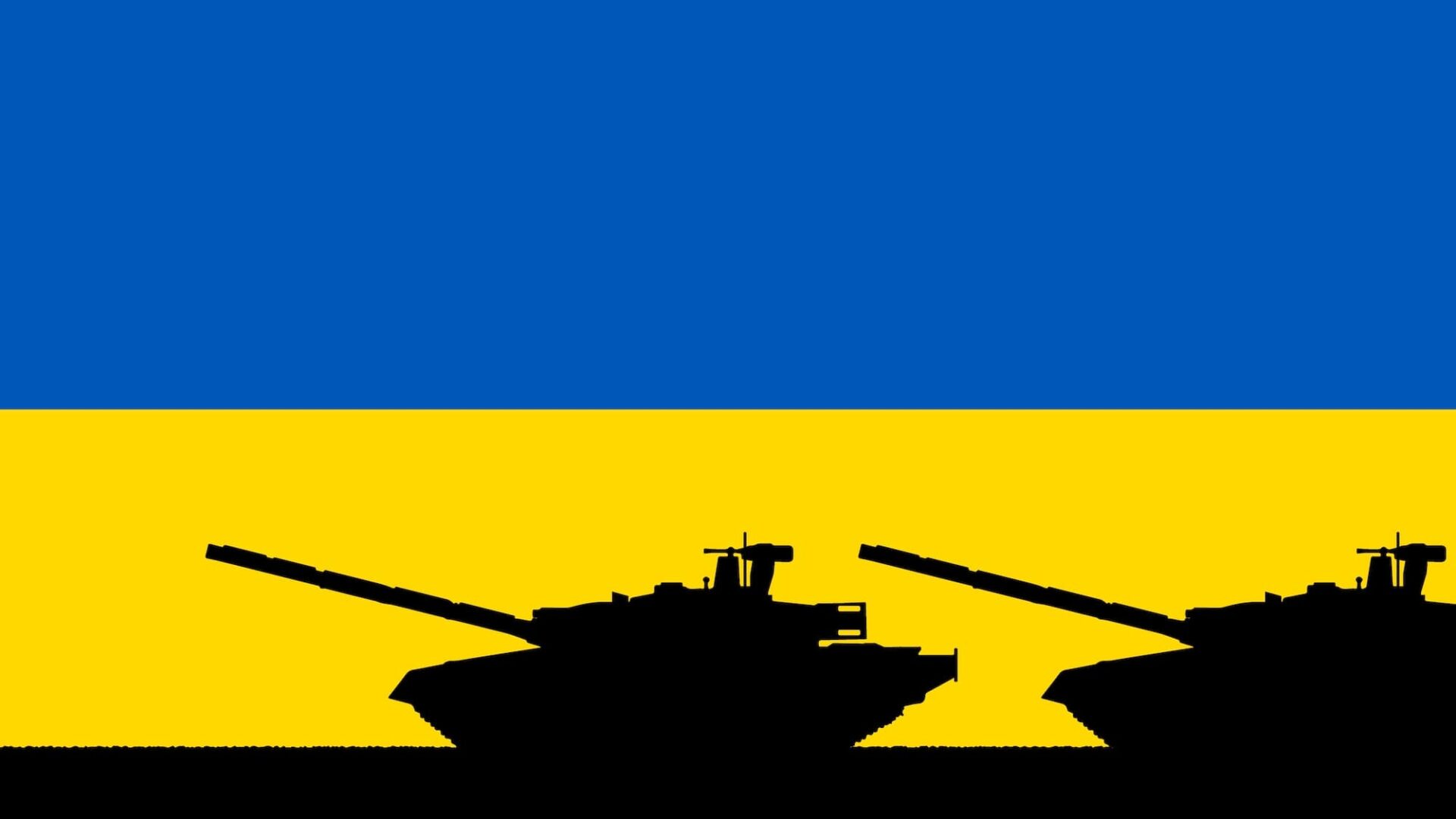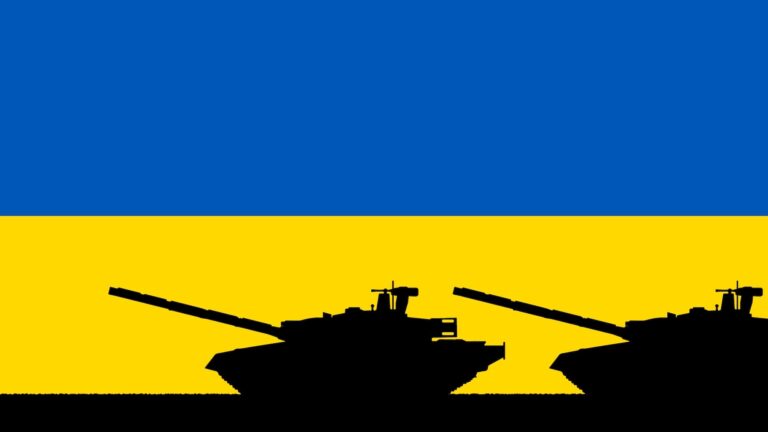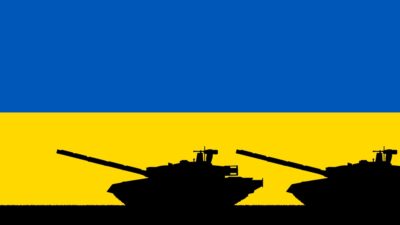by Pavel Havlíček, AMO
Relations between the Russian Federation and Ukraine, like the rest of the Western community, including the Visegrad Group, have never been more intense in the past and might be expected to remain so in the foreseeable future. The Russian aggression against Ukraine has caused a chain of reactions that is fundamentally transforming Europe and the world, although we are not yet able to fully capture its effects.
Following Russia’s annexation of the so-called separatis territories and the subsequent military invasion of Ukraine, the Ukrainian leadership, led by Volodymyr Zelensky, made a decision to definitively cut off diplomatic relations with Russia, and urged the rest of the international community, which stood cold with Russia’s move with only a few exceptions, to do the same. In addition, Ukraine also applied for the EU membership, which was immediately sanctioned by ten heads of state, mostly from Central and Eastern Europe.
Russia, on the other hand, bet everything on one card of ultimate victory and destruction of Ukraine’s leadership and army forces, in which the leadership of Vladimir Putin, invested in terms of military, economy as well as the fate of his country. However, there seem to be unprecedented risks for the Putin regime in the future, which will materialise over time as the Western-backed armed conflict between Russia and Ukraine develops. Many experts and international observers of the situation predict that Putin’s regime is finally destined to fail in the long run.
However, the short-term developments of the whole crisis remains largely unpredictable, as shown by the decision of Russian President Vladimir Putin to bring the nuclear arsenal forces to the highest level of combat readiness, thereby trying to demoralise and scare Ukraine and discourage Western countries from supporting the Ukrainian resistance, including when imposing the economic sanctions against the Putin’s regime.
What to expect next? Three scenarios…
In the context of the Russian goals in Ukraine and ongoing developments on the ground, any future scenarios must necessarily take into account not only the military aspects of the current crisis and the economic sustainability of the military campaign, but also the position of the international environment as well as President Putin’s personal ambitions vis-a-vis Ukraine and the position of Russia in the world.
In the first possible scenario, we might outline a picture in which Russia’s great power ambitions could in theory collapse and Russia would not be able to conquer Ukrainian territory, or it would not be able to hold control over it after heavy losses, and it would have to gradually withdraw. This scenario assumes both the collapse of the Russian economy and the failure of military operations, when the Ukrainian army with high combat morale and support from the civilian population as well as the West would not only resist, but also make clear that their further progress is impossible. Mass anti-war riots and socio-economic tensions in Russia itself could be expected, which Vladimir Putin’s regime must pay close attention to.
At the same time, it would be important for the realisation of this scenario that in the short term a larger number of Western forces, including the Baltics and the Black Sea, will move to NATO’s eastern flank, which will be accompanied by the Russian troops who will feel the urge to prevent any potential threat from the NATO forces in both regions. This option, indeed, poses significant risks for Vladimir Putin’s regime and the president himself. In domestic politics, some elites would necessarily condemn the weakness and others the actions that brought Russia to ruins, also because of the Western economic pressure. Both the cohesion of Russia’s vast territory and the (physical) survival of President Putin and some form of palace coup would inevitably arise.
The second compromise option would be a settlement between the two countries, which would lead to the withdrawal of Russian forces from Ukrainian territory, but at the cost – for example – of subordination of Ukrainian foreign policy and security to Russia (so-called “neutralization” demand by Russia) and thus the enforcement of Russian goals in the country, in exchange for the formal maintenance of Ukrainian territory together. Another variant of this scenario – as Russian and Ukrainian officials discussed at the beginning of the ceasefire talks – would involve maintaining Crimea and the newly annexed territories in the Russian Federation, but withdrawing Russian forces from the rest of Ukraine.
This scenario also assumes the continuation of the current problems of the Russian army in terms of logistics as well as command and control of invasion from several directors, the cessation of Russia’s progress, long-term battles for Ukrainian cities and involvement of the civilian population that would deplete both Russian forces and the economy so much that there would be mutual exhaustion and a final agreement on ceasefire. In a wear and tear war, where neither side is fundamentally on top, this compromise could seem to be the best possible solution for both parties.
The third and darkest scenario for Ukraine assumes the surrender of the Ukrainian armed forces in the short term, which may – but does not have to – be associated with the liquidation of the country’s political leadership, led by President Volodymyr Zelensky. It is based on a situation in which the Ukrainian army is destroyed, society demoralised and the country’s leadership having no choice but to surrender. This scenario presupposes the establishment of a kind of puppet government, for example, under the leadership of the pro-Russian politician Viktor Medvedchuk, a traditional ally of Vladimir Putin in Ukraine.
On the other hand, this development requires not only the deployment of the Russian forces on Ukrainian territory, but also an enormous terror against Ukrainians in order to enforce the new order. The long-term occupation of much of Ukraine’s territory would inevitably entail significant losses in the guerrilla struggle that the West is most likely to support, at least in the western part of Ukraine, which Russia would no longer be able to isolate from the Western interference.
Finally, this scenario also requires a massive involvement of Chinese finances, to subsidise the Russian economy and indirectly finance the war, which would lead to a dramatic deterioration in West-China relations. There are some dilemmas facing the Chinese leadership today, we would have to see if it wants to risk the effect of Western sanctions on its own companies, as well as how openly it wants to support Russia. This situation of the US forces engaged in Europe is beneficial for China because it provides additional scope for the struggle for dominance in the Indo-Pacific area, including most notably against Taiwan. Ultimately, this scenario would bring Russia under even closer Chinese control.
Western and V4 reactions to the crisis
Individual members of the international community, especially in the West, have already taken a number of bilateral measures against the Russian aggression and also in favour of Ukraine and its struggle for a free and democratic order in Europe and the world.
Among them, the EU and NATO have played the most significant role. For some of their members – such as Germany, Sweden and Finland – this crisis represents a fundamental shift in their foreign and security policy. In Germany, where the new leadership of Chancellor Olaf Scholz decided not only to provide military equipment to Ukraine, but also to cut off the Nord Stream 2 pipeline and substantially increase arms spending. For Finland and Sweden – both non-NATO countries – this crisis is a major shock and their response in the form of providing military equipment to the Ukrainian army is a breakthrough in behaviour in the international arena. It is not clear at this time whether Russian aggression will eventually bring both countries into NATO, but opinion polls indicate support for this move.
However, most prominently, the EU of 27 has come the long way over the last week. In recent days, in close cooperation with the US, the EU has not only agreed to disconnect some Russian banks from the SWIFT payment platform and enforce other decisive sanctions against the Kremlin, but also to buy and supply weapons to Ukraine. For the first time ever, the Union is going to do so through its financial instruments, an unprecedented move that complements other vigorous economic and financial measures well. In addition, the EU has finally shut down the Russia Today (RT) and Sputnik – Russia’s propaganda machines – all around the EU. On its own axis, the United Kingdom and the United States are also pushing for a robust response, which is decisively targeting Russian banks and finance, the oligarchs and the oil industry.
Among the EU members, the V4 countries and other CEE states have played the most prominent role and engaged in multi-level response to the crisis. Even if differing in their level of ambitions, the CEE countries have proved invaluable in the humanitarian aspects of the crisis providing shelter to fleeing Ukrainians as well as materials and necessary equipment to the society and army forces. Poland, in particular, became the prime example of this effort when operating as a hub for helping dozens of thousands of Ukrainian citizens, the country’s army as well, and pushing for harshest possible costs on Russia. Slovakia, Hungary or the Czech Republic standing closely behind, even if the Hungarian stance has – as always before – been less beneficial for Ukraine due to the bilateral conflicts.
The PM Viktor Orbán, for example, banned exports of weaponry or even its transport through its territory, officially due to the security concerns related to the Hungarian minority in the Western-most part of Ukraine. The country’s leadership has also continued to cooperate with Putin’s Russia on key economic and energy projects, such as the Paks-II nuclear power station or inflow of cheap gas based on mutual agreements. Orban and the Czech President Miloš Zeman openly criticised the Russian aggression and even supported the decision to cut Russia off SWIFT and other harsh measures, despite some delays from the side of the Hungarian government.
The region keeps playing an instrumental role in preventing the collapse of Ukraine and bolstering the Western response to Russia. At the same time, this is also because the CEE is going to be exposed to most of the pressure from the crisis, including the influx of Ukrainian refugees. Nevertheless, for the time being, the society of V4 countries and other CEE states seem to be resistant toward the pressure and being at the forefront of the Western response to the crisis. Czechia serves as a good example here, when the country fundraised an enormous amount of funding both from the society, business and the government, partially when donating to the Ukraine’s Embassy Fund dedicated to the purchase of military aid and equipment for the army forces. Even better results were already achieved by the humanitarian fundraising campaign by several Czech NGOs.
Even if it is clear that the challenge is going to stay with us for the time being and it might be further worsened by the Russian military advancement, the V4 countries in particular seem to be, at least for the time being, well-prepared to face the challenge and provide the necessary help to Ukraine and its citizens. It is also because everybody realises that the CEE countries might be next as the Putin’s regime keeps questioning their NATO accession in 1997 and later. Now, Ukraine is fighting for our freedom, we need to do our job too!
Pavel Havlíček is a Research Fellow of Association for International Affairs (AMO) Research Center. His research focus is on Eastern Europe, especially Ukraine and Russia, and the Eastern Partnership. He also deals with questions of strategic communication and disinformation as well as democratisation and civil society support. In May 2020, he was elected to serve a two-year-long-term as the Board member of the EU-Russia Civil Society Forum. Since August 2020, he is also the Russia research coordinator within the MapInfluenCE project.
The views and opinions expressed on our blog are those of the authors, representing a wide range of viewpoints, and do not necessarily reflect the position of VSquare or our affiliated organisations.







